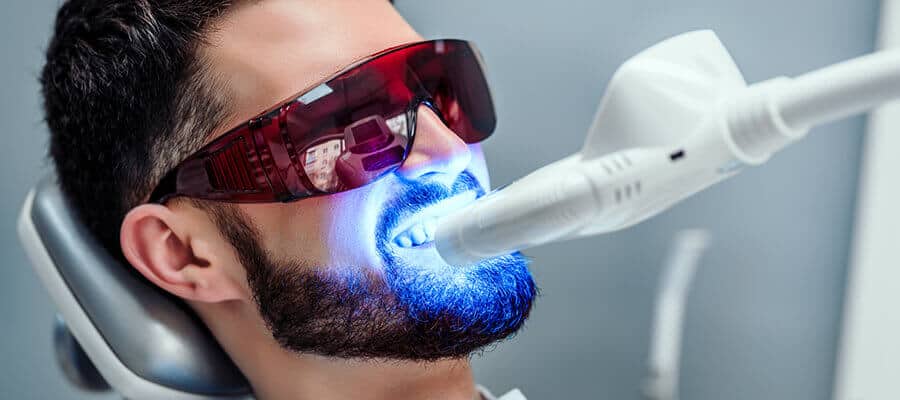
Orthodontics is a branch of dentistry specializing in the diagnosis, prevention, and treatment of jaw, face and bite irregularities (malocclusions*). Orthodontic treatment is provided by an oral health care provider known as an Orthodontist, who has typically completed two to three years of additional training beyond dental school.
Recent years have brought about many changes within the dental industry, specifically with regards to orthodontic treatment and care. Now more than ever patients are experiencing fewer incidences of cavities and missing teeth due to the heightened awareness of fluoride use and preventative dentistry. This increasing awareness on the health and look of a patient’s smile has fueled the desire for many to seek out orthodontia not only as a medical necessity, but for cosmetic reasons as well.
Whether it’s traditional braces or custom made removable appliances, orthodontics can help you have the healthy, straight, beautiful smile you’ve been waiting for!
Give us a call today and schedule your orthodontic consultation!
*Malocclusion is the technical term for teeth that don’t fit together correctly. Malocclusions not only affect the teeth, but also the appearance of the face. Most malocclusions are inherited; however some are due to acquired habits such as thumb sucking and tongue thrusting. The spacing left from an adult tooth being extracted or an early loss of a baby tooth can also contribute to a malocclusion.
FAQs
What is orthodontics?

Orthodontics is a specialized branch of dentistry focusing on diagnosing and treating “bad bites” (the technical term is malocclusion) and jaw irregularities. Orthodontic treatments, such as braces, clear aligners, and retainers, aim to align the teeth properly, improve oral health, and enhance the appearance of the smile. An orthodontist, with two to three years of additional training beyond dental school, often provides orthodontic treatment. General dentists can also offer basic orthodontic treatments.
When should my child see an orthodontist?
The American Association of Orthodontists suggests children have their initial orthodontic evaluation by the age of 7 to identify any potential problems. Early orthodontic treatment can reduce the need for extensive dental procedures in the future.
Who can benefit from orthodontic treatment?
Orthodontic treatment is recommended to individuals who have specific dental issues that can benefit from alignment and correction. Common orthodontic problems include overbite, underbite, overlapping, crowded, crooked, and rotated teeth.
What are the advantages of orthodontics?
Orthodontic treatments offer both cosmetic and functional advantages. Properly aligned teeth are easier to clean, improve chewing and speech function, may ease TMJ disorder-related pain, and reduce the risk of cavities, gum disease, and other oral health issues. Ultimately, orthodontics can help achieve and maintain a beautiful, healthy smile.
Are there any drawbacks to orthodontic treatment?
Potential drawbacks of orthodontic treatment include the need for patience and strict adherence to treatment guidelines. Inadequate oral hygiene around orthodontic appliances can lead to a greater risk of cavities. Treatment times vary for each individual, and it is essential to follow your provider’s recommendations for oral hygiene.
How long will my results last after orthodontic treatment?
With proper use of retainers as directed, the results of orthodontic treatment are expected to last a lifetime. It’s crucial to follow the provider’s instructions for long-term success.
What are examples of common orthodontic treatment?
Orthodontic treatments include traditional braces, clear aligners, retainers, and palate expanders. Braces gradually shift teeth into desired positions using brackets, bands, and wires. Clear aligner systems, such as ClearCorrect, offer an alternative to braces, while retainers maintain the results of orthodontic treatment. Palate expanders aid in widening a child’s upper jaw when necessary.
Who offers orthodontic treatment?

In most cases, orthodontists, with additional training beyond dental school, perform orthodontic treatment. They focus on improving the bite and do not perform general dentistry treatments like fillings, crowns, or bridges.
General dentists like Dr. Rader are also qualified to offer basic orthodontic services, such as ClearCorrect aligners.
Is orthodontic treatment only for children and teenagers?
Orthodontic treatment is not only for teenagers and children. Many adults also benefit from orthodontic treatment to correct alignment issues with the teeth and achieve a more confident smile. With advancements in orthodontic technology, adults can choose from various discreet options such as clear aligners to address their orthodontic needs.
What should I expect during ClearCorrect treatment with Dr. Rader?
If you elect to use the ClearCorrect system, you can expect regular visits to Dr. Rader for adjustments, maintenance of your aligners, and progress checks. Dr. Rader will provide you with detailed instructions on how to care for your teeth and orthodontic appliances at home, as well as guidance on maintaining good oral hygiene throughout your treatment.






